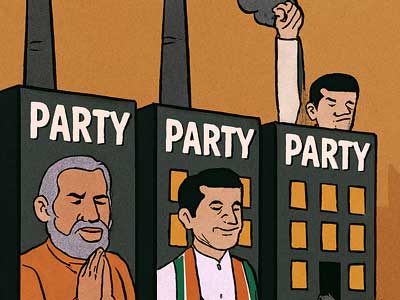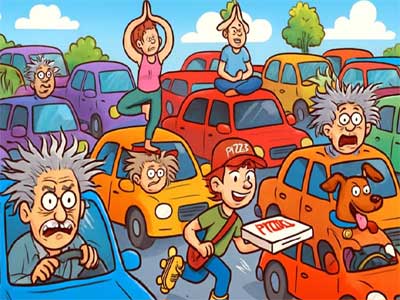After the Ahmedabad Air India tragedy, a Pandora’s box of horrors has been opened. Even experts are stunned at how suddenly India’s aviation sector is spiralling into a vortex of terrifying failures. Consumer confidence is wavering, flights are being cancelled, and ticket prices are plummeting. The real question is: How was this aviation system functioning at all when endless technical glitches and negligence have been rampant?
Behind the government’s tall claims lies a chaotic reality—a sector drowning in technical failures, crumbling infrastructure, lax oversight, careless staff, and blatant disregard for passenger safety. Deaths are mounting, and complaints are soaring higher than the planes themselves—with Air India, the so-called ‘national carrier’, leading the charge!
The bigger question is: Are only Air India officials responsible, or is the entire political system to blame? Why haven’t any ministers resigned?
So far, the government has boasted about its ‘achievements’—airports increased from 74 in 2014 to 148 in 2023, the UDAN scheme added 469 routes, and Delhi-Mumbai Airport received ‘carbon accreditation’. However, these are just superficial fixes—akin to slapping a bandage on a festering wound. The truth is, India’s skies have become a breeding ground for disaster.
Engine failures, hydraulic leaks, cracked windshields, emergency landings—these are now routine. In 2022, the DGCA recorded over 400 safety incidents, and the number keeps rising. These aren’t minor glitches but signs of systemic rot. Ageing aircraft, shoddy repairs, and cost-cutting airlines have become the norm. Air India, IndiGo, and SpiceJet repeatedly face accusations, but the fines are laughable—just a few crores, pocket change for these companies. The DGCA, meant to be a watchdog, is powerless, issuing advisories that airlines simply ignore. Accountability? Nowhere to be found!
Prof Paras Nath Choudhary, who frequently flies between Patna and New Delhi, says the government boasts about 148 airports, but most are just ‘airstrips’ without basic facilities. Smaller UDAN airports lack navigation systems, trained staff, or even fire safety measures. Even major airports like Delhi and Mumbai are crumbling under pressure, leaking roofs, endless queues, and lost luggage. Passengers are herded like cattle, while overworked staff either snap at complaints or shrug helplessly. The result? Travellers stranded for hours, medical emergencies ignored, and families mourning preventable deaths. Every ‘Mayday’ call is a chilling reminder of how close we are to the next tragedy.
The government calls UDAN a ‘game-changer’, but it’s a half-baked fantasy. Yes, 74 airports were added, but many routes are unsustainable—airlines are pulling out due to low demand or high costs. ‘Affordable tickets’…? A cruel joke, when fares on these routes rival those of major airlines. Claims of ‘sustainability’? False, when planes burn fuel idling on the tarmac during delays, and ‘appearances’ trump safety. This growth is built on lies—inflated numbers and ignored warnings.
Every major accident follows the same script. The DGCA issues frantic directives, airlines promise reforms—and then, nothing. The 2020 Kozhikode crash exposed runway safety and pilot training failures, yet nothing changed. Public anger fades, and the cycle repeats. Air India’s record—cancellations, delays, mid-air scares—is proof of this apathy. The box is open, and no government propaganda can shut it now.
Frequent flyer Jagan Gupta, a young entrepreneur from Bangalore, says what’s needed are strict laws, new aircraft, rigorous training, and functional infrastructure. Until then, every takeoff is a gamble, and every landing leaves passengers holding their breath.


















Related Items
India stuck in traffic; Cities halt, Horns holler, and time takes a nap
India’s deep dark fraud economy unveiled…
Bangladesh’s Radicals vs India’s Liberals, A dangerous imbalance…